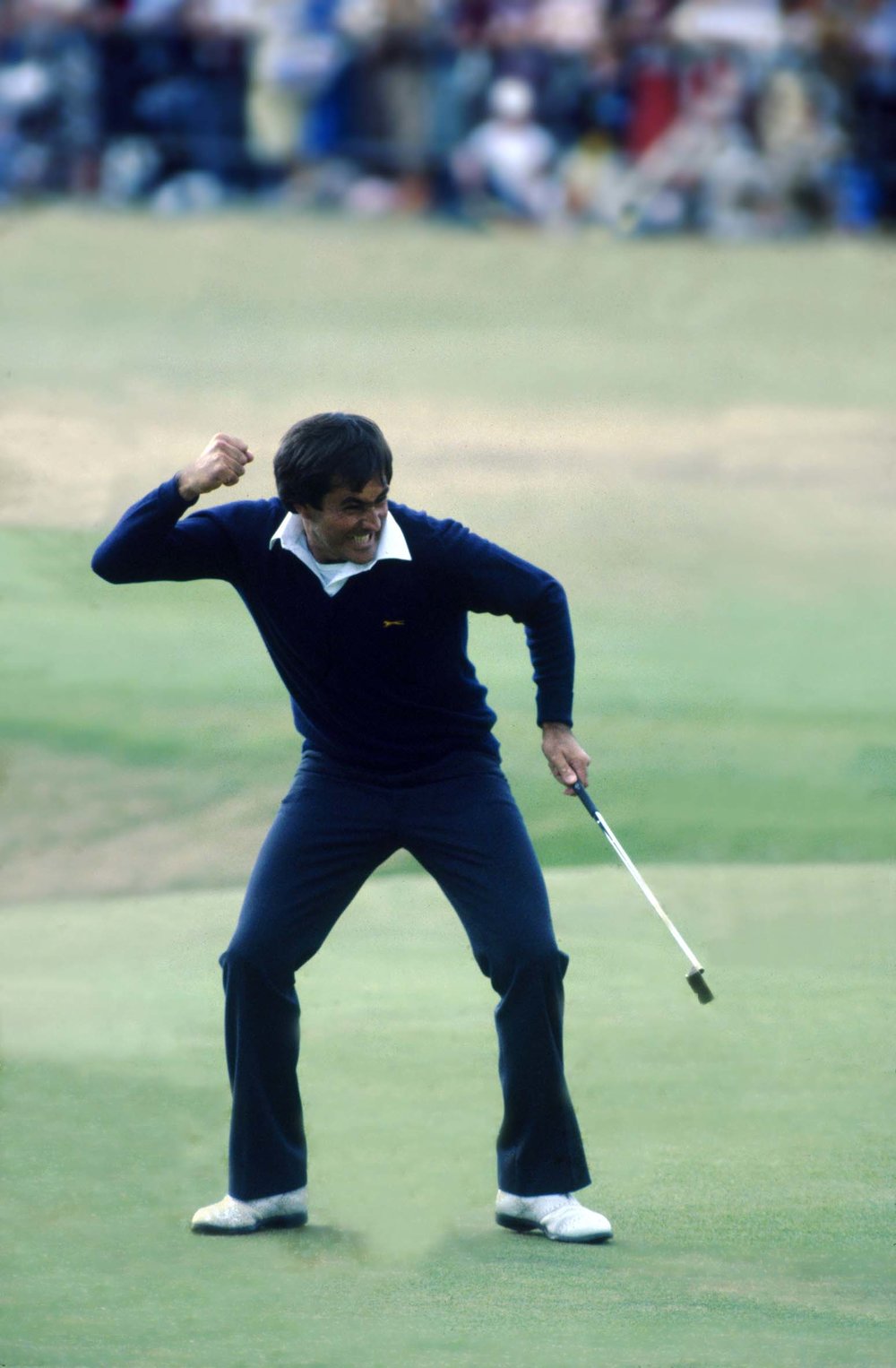Q&A With Adam Schupak, Part 1
/ I reviewed Adam Schupak's new book on/with Deane Beman in last week's Golf World and to synopsize: it's fantastic. When I first heard that Schupak was penning Beman's memoirs I figured we'd get the typical reimagination of history. Instead Deane Beman: Golf's Driving Force is full of insider information, lively storytelling and a rare look into the mind of a shrewd negotiator and those he dealt with. Beman is actually just part of the book thanks to Schupak's research, which turns the book into both a history of the PGA Tour over its twenty most interesting years, but also a look into the minds of those on Team Beman and those who battled with the man.
I reviewed Adam Schupak's new book on/with Deane Beman in last week's Golf World and to synopsize: it's fantastic. When I first heard that Schupak was penning Beman's memoirs I figured we'd get the typical reimagination of history. Instead Deane Beman: Golf's Driving Force is full of insider information, lively storytelling and a rare look into the mind of a shrewd negotiator and those he dealt with. Beman is actually just part of the book thanks to Schupak's research, which turns the book into both a history of the PGA Tour over its twenty most interesting years, but also a look into the minds of those on Team Beman and those who battled with the man.
I can't recommend this book enough. Oh and one other reason to buy it: publishers passed on it. Yet it's precisely the kind of intelligent, entertaining and practical sports business book they used to publish and sell with ease. Now they are publishing John Daly's fourth wife.
Here is part one of a two part email Q&A with Schupak, the former Golfweek writer who put this impressive piece of work together over several years.
Q: This book seemed to come out of nowhere, what's the backstory?
AS: Deane Beman tried to get a publisher in the late ‘90s with the assistance of IMG’s literary division. The talented author Steve Eubanks drafted a sample chapter. There were no takers. Beman showed me a file of rejection letters. They said he had waited too long and had missed his window. Why did he wait? Beman didn't want to be seen as second-guessing and making a difficult job any more difficult for Finchem, his successor.
So the book idea died for a while. I approached him in 2005 with a proposal after I finished grad school. I still owned my little place in Ponte Vedra and writing a book on Beman was my plan to return there. He turned me down. I got a job with Golfweek and put the Beman book on the backburner. He fiddled with the idea again and one day in 2009, Beman emailed me. It was one line: “I’m ready to do a book. Are you still interested?”
He gave me permission to tell agents I had his cooperation and he gave me time and access to info as I wrote sample chapters and a treatment for a book effort. I talked to some big name agents in the business. One prominent agent was a family friend, another had a stable of perennial best-selling authors, and a fellow writer recommended his agent. No one believed in the book. This was pre-kindle, economy in the tank, and publishers were only signing off on slam-dunks. I was an unproven commodity and Beman’s window they said had long passed. What little interest I generated amounted to transforming the book into something entirely different for sales purpose with Beman as a recurring bit character. It wasn’t the story I wanted to tell so I decided to do it my way.
Q: Did he place restrictions on what you could write or who you could talk to?
AS: The very first thing I said to him was that I didn't want to be his stenographer. He cut me off, and said, “Good. I don't want you to be. Go talk to anyone you want to. I know there are some people who still think I did everything wrong. I'm comfortable with my record.” It was the voice of a confident man, not an arrogant one, and he lived up to his promise.
Q: It's an unusual format in that you are doing an authorized biography, yet Beman's views seem to be maybe 30% of the information you share on each topic, the rest is your research along with the recollections of others to form what is essentially a history of the PGA Tour and also a business book. How did you envision telling his story this way?
AS: I never set out to write a classic biography of Beman. If you want the Konica Minolta BizHub analysis of his childhood, you’ll be disappointed in this book. I weave in some stories from his childhood that show how even then he thought big. I touch on his playing career because it’s important for the reader to understand that here was a decorated amateur champ, who walked away from a successful insurance practice to turn pro, and then after finishing 26th on the money list (Tour Championship qualifier in today’s terms) decides to become commissioner.
My premise for the book in a nutshell is everyone knows the Tour is a success today, but very few know how it became one. To me, the main figure in the making of the modern-day Tour is Beman and I treated his 20-year tenure the way David Halberstam treated the 1946 baseball season.
Q: The chapter on grooves and PING is particularly fascinating because it's the most complete re-telling of that saga, complete with some great stuff from Frank Hannigan. It's also remarkable how Beman was vindicated by the USGA's recent rule change. How did you go about researching this?
AS: That was the toughest part of the story to tell. It is so complex. I hope I added some insight but I made a strategic decision that it was worth telling the story of Round One so-to-speak in the groove wars between the USGA and Ping to understand why Beman and the Tour chose to take on this fight. I had to establish for the reader why he assumed this cause and why it was such a bedrock issue for him.
I call the chapter on the groove battle between the Tour and Ping “Soldiering on Alone,” because that’s what Beman did. He took a beating in the press. Some of the very players who pushed him to fight this fight disappeared when it got a little hot in the kitchen. Not Beman. Whether you agree with him or not, I think you have to admire a man that stands up for what he believes in when so many others are casting stones.
This was a fascinating section of the book to research. You have these two proud men – Beman and Karsten Solheim – who lived their lives on their own terms and both believe in their heart of hearts that they are right. I think they met their match in each other. They ran into the one other person as committed to winning. Then you have a brilliant lawyer, Leonard Decof, who is winning the case in the court of public opinion. You have the USGA whose role as the rulemaking body for the game is being challenged, and wants to preserve its place. A lot was at stake. There seems to be this assumption that the Tour would’ve lost a jury trial. I’m not so sure.
One of the great disappointments in writing this book was I did not get to speak to Decof. A Tour pro told me Decof was ill and I better get in touch with him soon. So I called his Providence, R.I.-office and I was told he was in Palm Beach, Fla. and to expect a call. I was delighted. I thought, “I may get to interview him in person.” If he’s willing, I’m driving south to meet him. Two days later, I logged on to your site and read your “RIP Decof” headline. As the British would say, I was gutted.
That disappointment was offset, in part, by John Solheim and his team of lawyers spending 2 ½ hours with me so I understood both sides of this story. John is an underrated interview. He is always candid. When he said his relationship with his father was scarred by the grooves settlement with the USGA, I could feel the pain that inflicted. I don’t think we can underestimate how big a role that played last year when Ping waived its rights to the Ping Eye2 exception to the 2010 condition of competition for grooves.
To be continued tomorrow...
















